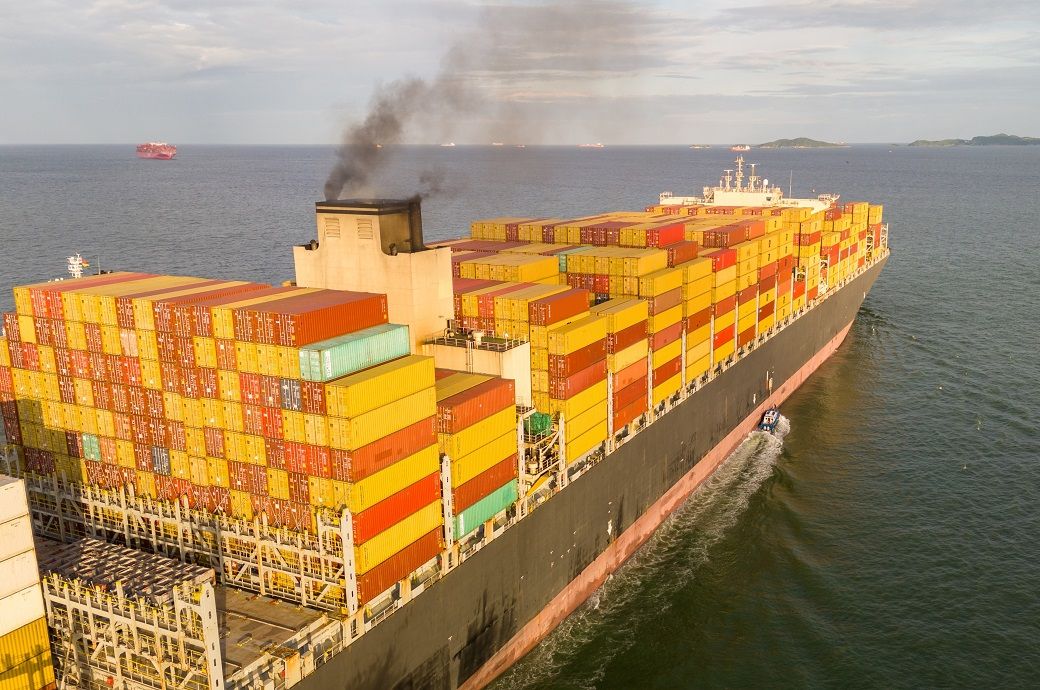
This development comes at a time when trade policy uncertainty is intensifying, particularly considering recent US tariff announcements. However, the data serves as a stark reminder that the ongoing climate crisis demands urgent and sustained attention, especially within global supply chains.
The rise in emissions casts doubt on the feasibility of the International Maritime Organization’s (IMO) goal of achieving net-zero emissions by or around 2050. The findings also underscore the need for shippers to prepare for stricter emissions regulations and take proactive steps to decarbonise logistics operations, Xeneta said in a press release.
Global container shipping emissions hit a record 240.6 million metric tonnes in 2024, up 14 per cent, driven by Red Sea conflict-related diversions.
Larger ships over 14,500 TEU saw steep emission rises, but mid-sized vessels (8,000–12,000 TEU) emerged as more inefficient.
Emissions outpaced transport growth for mega ships due to higher speeds and reduced utilisation, raising decarbonisation concerns.
The spike is largely attributed to vessels rerouting around the Cape of Good Hope following the escalation of conflict in the Red Sea in December 2023.
The new emissions peak was an expected consequence of these diversions, driven by an increased transport work and a surge in container demand in 2024, as shippers frontloaded imports in response to the Red Sea crisis. Overall transport work—calculated by multiplying cargo tonnage by nautical miles travelled—rose by 18 per cent during the year.
While container ships over 14,500 twenty-foot equivalent unit (TEU) recorded the largest year-over-year (YoY) emissions increase in 2024, they may not be the primary concern in the global decarbonisation push. Together, vessels above 14,500 TEU accounted for 18 per cent of total container shipping CO2 emissions in 2024—relatively modest when considering they represent 25 per cent of global capacity, added the release.
The bigger concern lies with ships in the 8,000–12,000 TEU range. These vessels emitted 51.3 million metric tonnes of CO2 in 2024—an 8 per cent increase YoY—yet contributed over 20 per cent of total fleet emissions despite only comprising 20 per cent of global capacity. This imbalance highlights the carbon inefficiency of older, mid-sized vessels, while newer, larger ships benefit from more advanced, fuel-efficient designs.
The overall rise in emissions in 2024 closely tracked the surge in transport work across most vessel categories. For instance, 14,500–20,000 TEU ships saw a 43 per cent rise in both emissions and transport work, driven by a 26 per cent increase in fleet size over the year. However, this does not fully account for all emission increases, indicating further scrutiny is needed across vessel classes and operations.
The data revealed a growing disconnect between transport work and emissions growth among the largest container vessels, raising fresh concerns over carbon efficiency. While smaller ships recorded lower emissions increases than their transport work gains—due to the higher capacity utilisation and stable sailing speeds—the same cannot be said for mega vessels exceeding 20,000 TEU.
In 2024, emissions from these largest ships rose by 35 per cent, more than double the 16.6 per cent increase in their transport work. The key reasons behind this efficiency drop are rising sailing speeds and falling utilisation levels. Average sailing speeds for these vessels increased 5 per cent during the year, negatively affecting fuel efficiency. Simultaneously, utilisation rates declined by nearly 10 percentage points compared to 2023.
Utilisation, calculated as the amount of cargo carried versus total available capacity, declined due to a mismatch between supply and demand. While overall capacity for these ships expanded, demand growth on key backhaul trades remained weak. Fronthaul volumes grew by 9.5 per cent in 2024, but backhaul demand edged up by just 0.9 per cent, leading to emptier return legs and dragging down annual efficiency.
Fibre2Fashion News Desk (SG)




